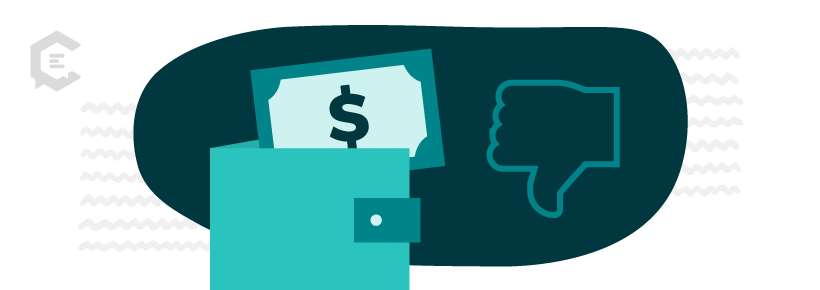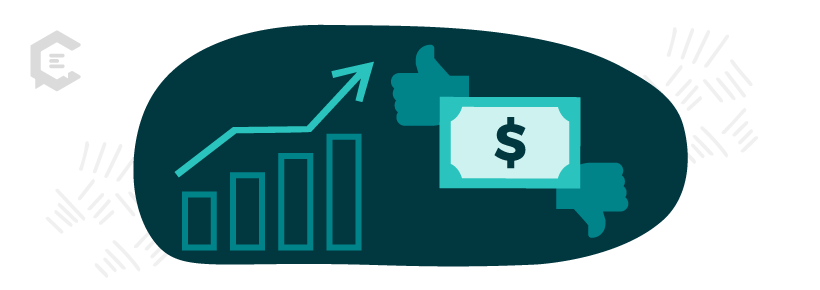In good times and in bad, individual consumers often turn to their favorite search engine for financial advice.
Enter the unsung hero: content marketing. For personal finance magnates, it’s not just about brand visibility. It’s a golden opportunity to educate, resonate, and elevate. They don’t merely answer fleeting questions; they forge trust while seamlessly showcasing their offerings.
Yet, beware the pitfalls. Drown your audience in a data deluge, and they’ll swim away. Compromise on accuracy or skip the metrics, and you’re treading on thin ice — risking not just credibility but your brand’s very essence.
Dive in as we decode the nuances of content marketing in personal finance education, highlighting its advantages and potential challenges.
Content Marketing in Personal Finance Education
Leveraging content marketing in the finance sector involves creating valuable and consistent content to attract a target audience. In the realm of personal finance education, content marketing encompasses a wide range of mediums. These include:
- Finance articles
- Videos
- Podcasts
- Infographics
- Webinars
Content marketing aims to show how your offering can empower customers. With your content in hand, they should know how to manage their finances effectively and make informed financial choices.
Pros of Content Marketing in Personal Finance Education
Content marketing in personal finance education is a powerful asset as you endeavor to earn customer loyalty and trust. It also positions your company as a knowledgeable thought leader and expert.
Here are some of the pros in more detail:
Enhanced financial literacy
Well-crafted content breaks down complex financial concepts into digestible pieces. This makes it easier for individuals to grasp and apply them to their lives. By helping your clientele feel comfortable with complex financial concepts, you empower them. In turn, you can earn you their gratitude and loyalty.
Increased engagement
Engaging and interactive content encourages active participation and includes content types like:
- Quizzes
- Calculators
- Interactive tutorials
- Surveys
The goal is to captivate the audience and encourage meaningful interaction. This way, your content reinforces learning by encouraging individuals to explore personal finance topics further. And because you put your offering top of mind, they also learn about your products and services.
Personalized learning
Content marketing allows for tailored learning experiences for specific groups of customers. By catering to different learning styles and levels of expertise, personalized content ensures that individuals receive information that resonates with their unique financial situations and goals.
Boosted trust and credibility
Consistent, high-quality content establishes the creator as a trustworthy source of information. Over time, this credibility fosters trust between content creators and their audience, leading individuals to rely on the provided insights and recommendations. This reliance breeds repeat customers — all bringing eyes to your offering.
Cons of Content Marketing in Personal Finance Education
At the same time, there can be some drawbacks to personal finance marketing, particularly when it’s not carefully managed.
Here are some of the cons to keep in mind as you formulate your strategy:
Information overload
The abundance of content available online can lead to information overload. Individuals may struggle to sift through the volume of information to identify credible sources and relevant insights. This can result in a wall of words that lack meaning for your audience.
Potential for misinformation
The democratization of content creation has its drawbacks. Misinformation or poorly researched content can easily enter the digital landscape. This might be potentially misleading individuals and negatively impacting their financial decisions.
Difficulty in measuring effectiveness
Measuring metrics in finance content marketing is challenging. Determining the impact of educational content on financial behaviors and outcomes is complex and may require long-term observation.
Time and resource intensive
Creating high-quality, informative content demands significant time and resources. Content creators must invest in research, production, and distribution. This can be a barrier for those with limited budgets or people power. In some companies, generating educational content falls on the shoulders of someone preoccupied with other important work. This can exacerbate the problem.
Potential for creating compliance issues
Financial companies have to tread very carefully to avoid violating compliance regulations. For example, you can’t make unsubstantiated promises or share insider information. Even an accidental misstep could result in considerable fines.
Maximizing Benefits and Minimizing Disadvantages
It’s possible to dodge the pitfalls in personal finance content marketing and maximize its benefits. Here are some helpful tips:
- Effective content planning and management. A well-defined content strategy is essential. Clear goals, target audience identification, and a structured content calendar help ensure content remains relevant, engaging, and aligned with educational objectives. If you’re struggling, we’ve got five financial content ideas to amplify your strategy for this year.
- Ensuring accuracy and compliance. Content creators must prioritize accuracy and adhere to industry regulations and guidelines to combat potential misinformation. Fact-checking, source verification, and transparent disclosures contribute to maintaining credibility in the eyes of your target audience.
- Utilizing analytics for performance measurement and optimization. Data analytics provide insights into the effectiveness of content marketing efforts. Analyzing metrics in finance content marketing, such as engagement, click-through, and conversion rates, allows content creators to refine their strategies for optimal impact.
- Balancing quality and quantity of content. Striking the right balance between producing a sufficient content volume and maintaining high quality is crucial. Quality content has a more lasting impact and is more likely to resonate with your audience.
- Outsourcing and crafting a high-performing finance content marketing team that understands your compliance regulations. Content creators with experience in the financial sector understand how to showcase your offering without falling out of step with compliance requirements, avoiding language that could raise the wrong eyebrows.
Want to Boost Your Personal Finance Education Business?
Content marketing has revolutionized personal finance education by making valuable information more accessible.
By employing effective strategies, content creators can maximize the benefits of content marketing while minimizing its potential disadvantage. This ultimately contributes to improved financial well-being for both individuals and communities.
If you’re ready to leverage the power of a personal finance education content marketing strategy, connect with ClearVoice today. We have top freelance finance writers with years of experience crafting effective, revenue-boosting content. See how the process works by talking to a specialist today.







